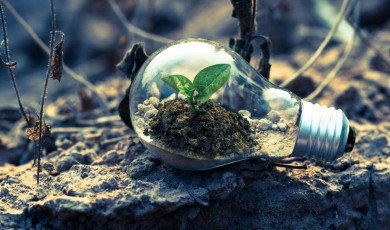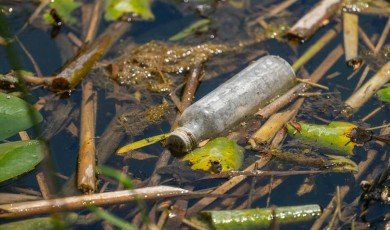
In a world facing unprecedented environmental challenges, collaborative action—rooted in shared knowledge—is more critical than ever. Climate change, pollution, deforestation, and biodiversity loss do not recognize borders. Effective response to these issues requires global cooperation, which often comes with its own hurdles, especially in the field of communication. One underappreciated but crucial element is the role of medical translation services in supporting environmental projects. By bridging language gaps in the transmission of health and environmental data, these services play a pivotal role in advancing scientific understanding, policy development, and public health outcomes linked to environmental interventions.
This post explores the intersection of environmental science and medical communication, examining real-world examples where translation makes a world of difference. From translating field research summaries on pollution and its health impacts to adapting community health outreach for regions affected by environmental degradation, life sciences translation services enable informed, actionable, and inclusive solutions to our planet’s most pressing concerns.
Why Medical Translation Matters in Environmental Projects
Environmental hazards uniquely affect human health. The World Health Organization (WHO) estimates that one in four deaths worldwide is caused by exposure to polluted environments. Communicating scientific findings, public health measures, and policy updates across linguistic barriers is therefore essential in ensuring that these messages reach affected communities, researchers, and policymakers globally.
Breaking Down Complex Information
Environmental projects commonly generate vast quantities of technical information—ranging from toxicology reports and epidemiological studies to health safety guidelines. These documents often require expert understanding not just of language, but also of medical, scientific, and technical terminology. Life sciences translation services ensure accuracy and clarity in translating these materials, so that crucial information about risks, interventions, and best practices are accessible to diverse audiences.
Real-World Impacts: Case Studies and Examples
- Monitoring the Effects of Pollution on Public Health: Air and water pollution create significant health threats, especially in highly industrialized or densely populated regions. International projects may collect samples, analyze data, and develop recommendations across multiple countries, each with its own official language. Professional translators with knowledge in environmental health are vital for producing reports that can be shared with local communities, regional authorities, and intergovernmental organizations. Clear, accurate translations can mean the difference between effective mitigation strategies and public confusion or inaction.
- Response to Environmental Health Crises: Events like chemical spills, wildfires, or infectious disease outbreaks linked to environmental change require a swift, coordinated response. Translation of emergency health guidelines, exposure prevention posters, and medical advisories is essential to reach all affected demographics, regardless of their mother tongue. This can save lives, as seen during events like the COVID-19 pandemic, where the translation of medical and public health information ensured global understanding and compliance with protective measures.
- Inclusive Health Research: Multinational studies often involve diverse populations as research subjects. To obtain informed consent and maintain ethical standards, study materials must be available in the local languages and reflect cultural contexts. Both environmental and medical translation services contribute to accurate reporting, which in turn enables reliable, actionable results in research on climate-related health trends and risks.
The Connection Between Life Sciences Translation Services and Environmental Sustainability
Medical translation is just one part of a broader constellation of life sciences translation services encompassing environmental science, biotechnology, healthcare, and pharmaceuticals. Together, these services create pathways for dynamic knowledge exchange across nations, disciplines, and sectors. For instance, a scientific team investigating the spread of vector-borne illnesses due to climate change might collaborate with local health departments and international agencies, all requiring document translations that capture nuanced terminology.
Expanding Education and Advocacy
Raising awareness about the links between environment and health depends on accessible information. Grassroots initiatives, educational organizations, and advocacy campaigns increasingly rely on translated materials—leaflets, multimedia content, and web resources—to engage marginalized or non-English-speaking populations. By providing translations of medical and environmental materials, these organizations foster community involvement, empower vulnerable groups, and help drive the global movement for a healthier, more sustainable planet.
The Synergy of Health and Environmental Solutions
The impacts of climate change and ecological degradation on human health are complex and interconnected. For example, increased vector-borne diseases, such as malaria, are linked to rising temperatures, while respiratory illnesses are associated with declining air quality. Projecting and managing these impacts often demands seamless collaboration between medical professionals, environmental scientists, policy experts, and local stakeholders.
Effective translation of project documentation, health advisories, technical protocols, and educational materials is not only a logistical necessity but also a matter of environmental justice. It ensures that knowledge and resources flow equitably to communities most affected by environmental change, regardless of their linguistic or cultural background.
Organizations like the United Nations Environment Programme (UNEP), the WHO, and numerous NGOs increasingly prioritize multilingual communications in their environmental health endeavors. Yet, the demand for high-quality, specialized translation continues to outstrip available resources. This is where expert providers of life sciences translation services come into play, bridging gaps that otherwise hinder the effective implementation and adoption of interventions.
How to Choose the Right Medical Translation Service for Your Environmental Project
Given the high stakes involved, choosing the right translation partner for environmental health projects is critical. Factors to consider include:
- Expertise in Relevant Scientific Fields: Translators should have proven experience in both life sciences and environmental health to ensure terminology accuracy and compliance with regulatory standards.
- Multilingual Capabilities: A reputable provider can offer translations into multiple languages, tailored to the regions or countries involved in the project.
- Quality Assurance: Look for services using native speakers, robust editing practices, and adherence to international quality standards.
- Data Security and Confidentiality: Environmental and medical research often handle sensitive data, making secure handling a top priority.
By partnering with specialized translation providers, environmental projects can achieve greater impact, inclusivity, and sustainability in their health-related activities.
Empowering Change through Communication
Environmental action is at its most powerful when informed by the best available evidence—and when that evidence is accessible to all stakeholders. As the climate crisis intensifies and its health repercussions become increasingly apparent, the urgency for multidisciplinary, multilingual collaboration is clear. Medical and life sciences translation services are not simply support functions; they are enablers of global response, informed policy, ethical research, and community empowerment.
By ensuring that scientific language does not become a barrier, but rather a bridge, to collective action, medical translation services enable progress toward our goal: a healthier planet for current and future generations. Environmental advocates, researchers, and policymakers can leverage these specialized translation services to amplify their impact, inspire engagement, and, most importantly, save lives.







